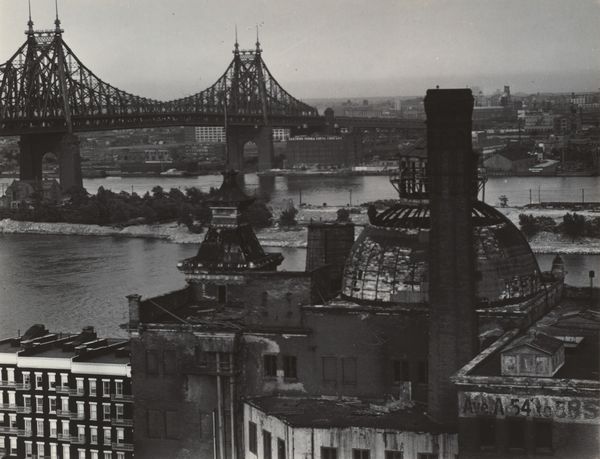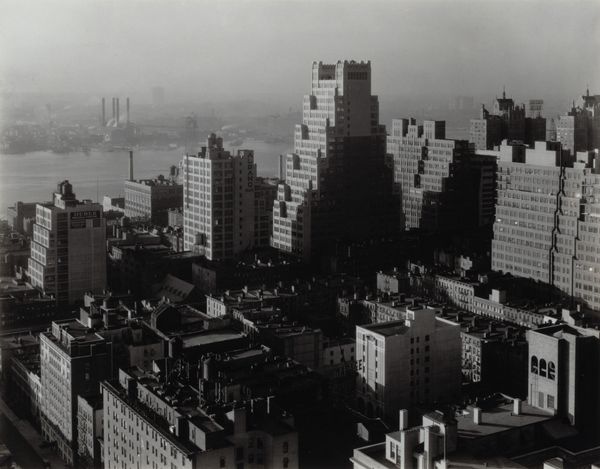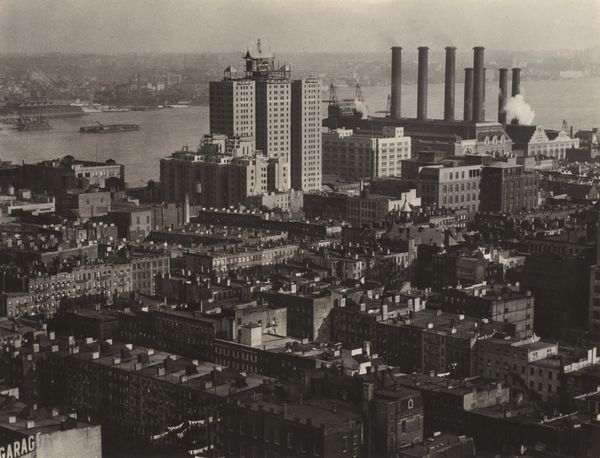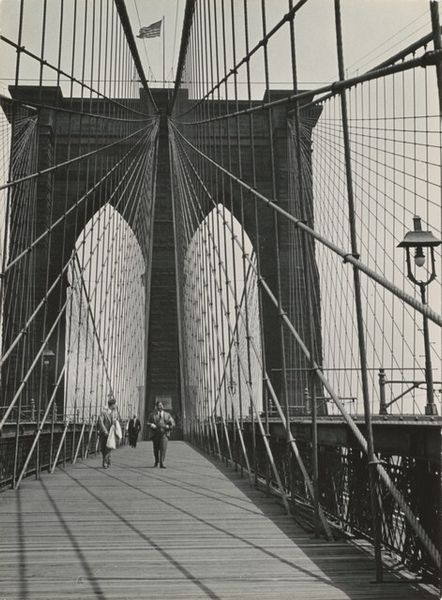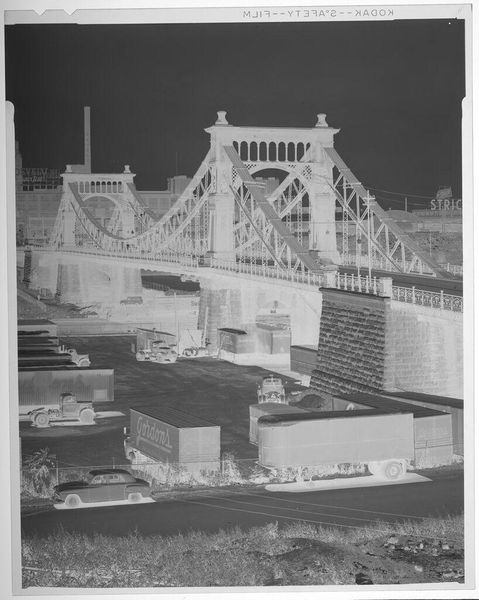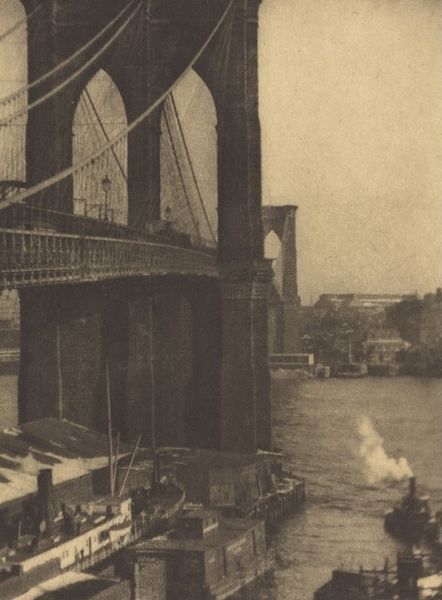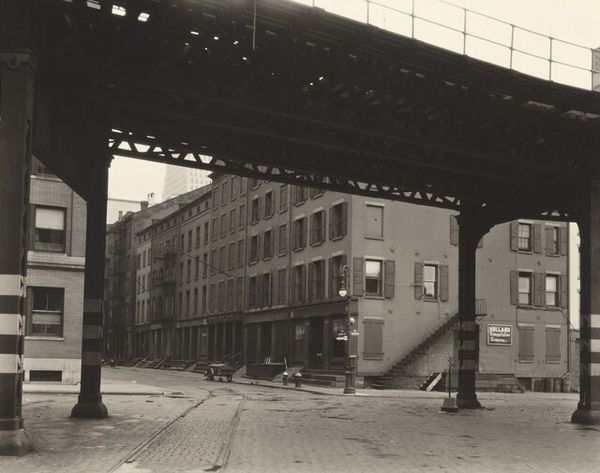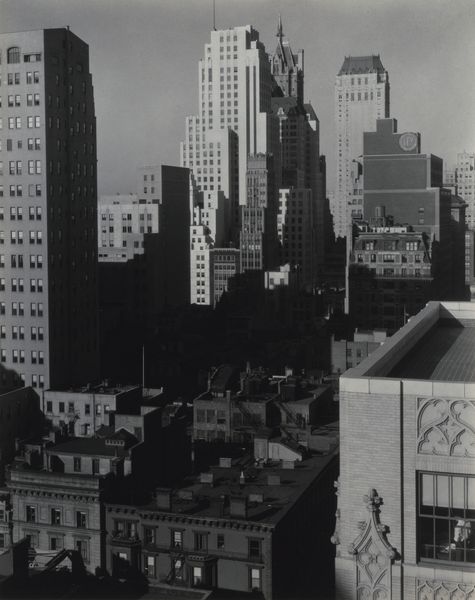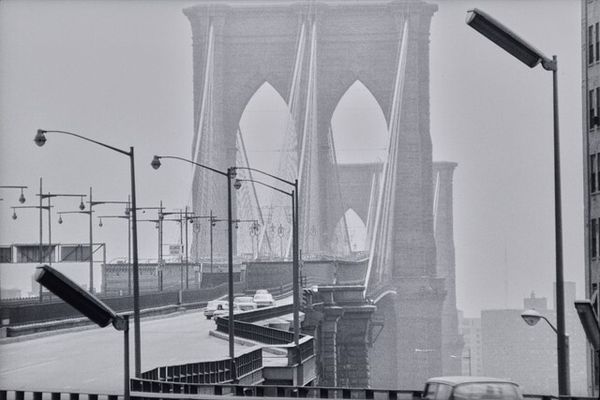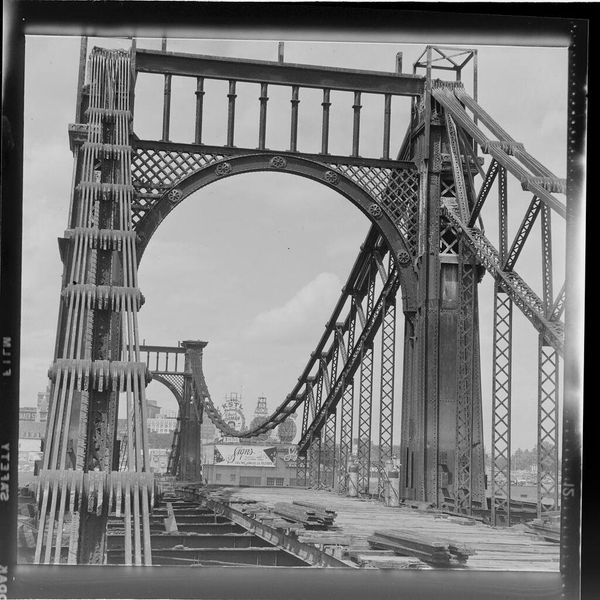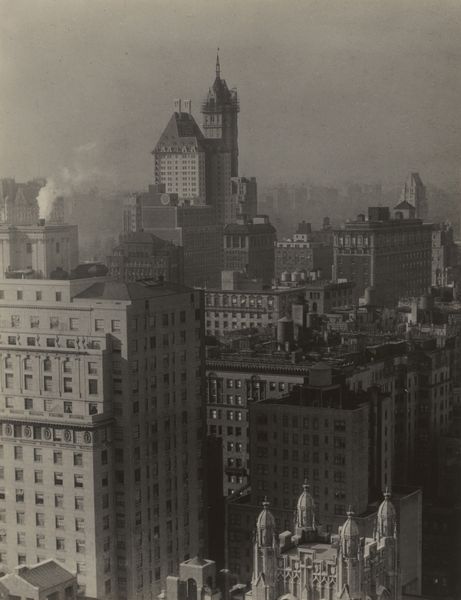
photography, gelatin-silver-print
#
precisionism
#
street shot
#
memorial
#
landscape
#
urban cityscape
#
skyline
#
historic architecture
#
photography
#
gelatin-silver-print
#
cityscape
#
modernism
#
historical building
Dimensions: sheet (trimmed to image): 11.7 x 9.3 cm (4 5/8 x 3 11/16 in.) mount: 31.8 x 25.1 cm (12 1/2 x 9 7/8 in.)
Copyright: National Gallery of Art: CC0 1.0
Curator: Looking at Alfred Stieglitz's "New York from 405 E 54th Street," a gelatin silver print made between 1936 and 1937, one immediately senses a dialogue between old and new. Editor: It feels monumental and melancholic. The rigid geometry of the buildings contrasts sharply with the almost lace-like delicacy of the bridge spanning the East River. Curator: Yes, the image captures a moment of urban transformation, focusing on the physical structure and processes of a rapidly modernizing city. Stieglitz often photographed New York to celebrate its materiality as part of American life. Editor: Formally, Stieglitz creates depth through carefully composed layers—the buildings, the river, and then that emphatic bridge which dictates the horizon line. Semiotically, the contrast is striking. We see the industrial age literally towering over domestic life. Curator: Considering the Depression era, and New York's role as a center of manufacturing and trade, it reflects the era's shift of labor from artisanal shops and small businesses towards larger industrial models as the backbone of our capitalist society. Editor: Though it’s a fairly straightforward composition, the tonal range in the gelatin silver print creates such a mood of industrial serenity—as if nature and industry are in harmonious tension, a sort of constructed pastoral. Curator: Exactly! Stieglitz used the city to advance modern photography, but also to question what sort of landscape modern progress was building for the working person. It challenges our romantic views of landscapes. Editor: Seeing that bridge reaching out from bank to bank—so geometric and ordered— I still read it more as a study in lines and shapes. It’s this play of verticals and horizontals which builds drama. Curator: Perhaps Stieglitz intended that tension to drive his narrative, forcing the viewer to assess what these material advancements did and what sort of culture would sustain such progress. Editor: It makes one think about the evolution of art, and how it shapes and is shaped by cultural narratives and material realities of its production. Curator: Indeed, a layered snapshot capturing not just a place, but an industrializing America through its own constructed materials.
Comments
No comments
Be the first to comment and join the conversation on the ultimate creative platform.
